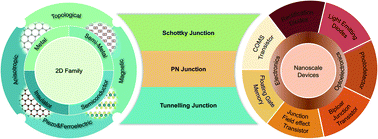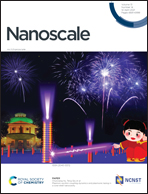Design and tailoring of two-dimensional Schottky, PN and tunnelling junctions for electronics and optoelectronics
Abstract
Owing to their superior carrier mobility, strong light–matter interactions, and flexibility at the atomically thin thickness, two-dimensional (2D) materials are attracting wide interest for application in electronic and optoelectronic devices, including rectifying diodes, transistors, memory, photodetectors, and light-emitting diodes. At the heart of these devices, Schottky, PN, and tunneling junctions are playing an essential role in defining device function. Intriguingly, the ultrathin thickness and unique van der Waals (vdW) interlayer coupling in 2D materials has rendered enormous opportunities for the design and tailoring of various 2D junctions, e.g. using Lego-like hetero-stacking, surface decoration, and field-effect modulation methods. Such flexibility has led to marvelous breakthroughs during the exploration of 2D electronics and optoelectronic devices. To advance further, it is imperative to provide an overview of existing strategies for the engineering of various 2D junctions for their integration in the future. Thus, in this review, we provide a comprehensive survey of previous efforts toward 2D Schottky, PN, and tunneling junctions, and the functional devices built from them. Though these junctions exhibit similar configurations, distinct strategies have been developed for their optimal figures of merit based on their working principles and functional purposes.

- This article is part of the themed collection: Recent Review Articles


 Please wait while we load your content...
Please wait while we load your content...